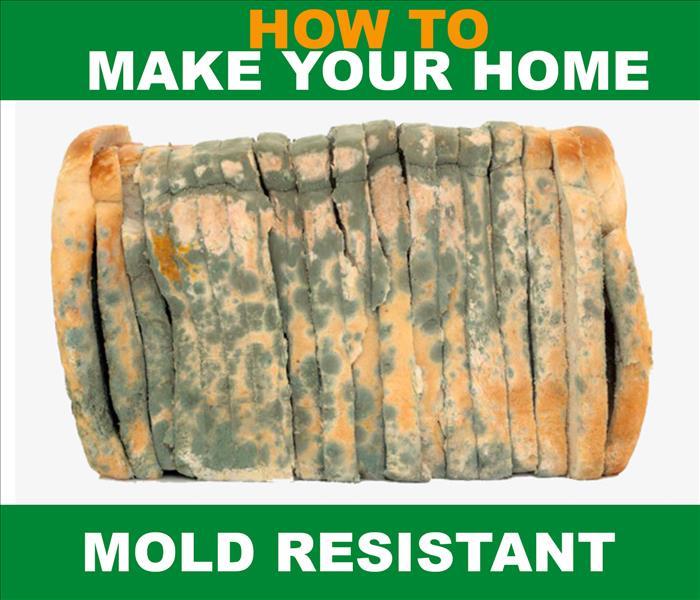How to Make Your Home Mold-Resistant in 8 Easy to Follow Steps
12/2/2019 (Permalink)
Mold is a common household guest. Mold may cause health effects without us even knowing. For this reason, the article you are reading is designed to better equip you with moisture prevention and ultimately mold prevention in your home. After reading this article you will know better how to prevent mold in your home and commercial building in Parkersburg, WV and surrounding areas.
First, we must know why mold is potentially harmful to us.
Why Remove the Mold?
Most mold that builds up in our homes and offices give out spors. These spors travel through the air and we breathe them in.
Some mold can also contain many irritants and allergens, which may cause health effects. Very few types of mold contain toxins, however its is important to know the difference. One type is Toxic Black Mold. At the end of this article we will contain a link on “How to Determine if You have Black Toxic Mold In Your Home”.
Where does Mold typically grow in our home?
Mold grows in areas that are moist and do not have much air flow. Common areas that mold grow include: the showers and bathroom, clothing and inside water bottles. Other, less visible or even hidden areas include: under the carpets, backside of the drywall and inside walls, pipes and ceiling tiles.
Even if the mold is hidden, it can negatively effect our health because it is the air in which the spors are transported.
What are the steps to stop it growing?
The main goal with mold control comes down to one simple rule: moisture control. In the next 8 points you will know exactly how to moisture control your home and ultimately minimise the possibility of mold growing in your home.
- Identify problem areas in your home and correct them. While it is not possible to make your home completely “mold proof” you can make it “mold resistant”. Look around your home first and identify the problem areas. Some suggestions of what to look for include: Does the basement flood? Do any windows get frequent condensation? Are there any water stains on the walls or roofs? Once you’ve done this, go immediately to step 2.
- Dry wet/damp areas immediately. No moisture - no mold growing. Therefore the more proactive you are with removing the moisture / water, the harder it is for mold to grow and thrive. Side Note: Do not leave wet clothes in the washing machine. Mold can spread very quickly and this is very common in homes where we easily forget about our clothes.
- Proper ventilation. It is often our bad habits that help mold to grow in our homes. When cooking, showering or anything that includes steam always be sure to properly ventilate the room and home. This can be as simple as opening a window (yes even in winter) or having an exhaust fan in the room or a dehumidifier.
- Use Mold-resistant products. This is a harder one because it can be a costly one compared to the above. BUT once done, less work and time is needed on your behalf. Common dry wall allows little ‘pockets’ for mold to sit in comfortably. This is because it’s made of gypsum plaster core pressed between plies of paper. Whereas with mold resistant drywall the gypsum core is covered in fibreglass instead. This makes it highly water-resistant.
- Monitor the humidity indoors. According to the EPA, indoor humidity should be between 30% and 60%. Humidity meters are available at any local hardware store. Once you have the meter, you’ll be able to detect the high humidity areas in your home and follow step two again.
- Direct water away from the home. Make sure that the ground around your home is sloped slightly away from your home. Otherwise your home quickly builds up water. Not only does this make it vulnerable to mold build up, but also flooding and flooding damage, which can be very costly to fix.
- Clean or repair roof gutters. Often cases with mold derive from a leaking roof or damaged gutters. Check: that your gutters are cleaned regularly and inspected properly for damage. If damaged: repair as soon as possible.
We hope that these pointers have helped you understand further. Mold is something every home should avoid as it is an unnecessary, potential health risk in your home. And your health must be primary.
To read further about Black Toxic Mold and how to determine if it is present in your home, please click here to read.
If there are any other questions or concerns you may have please do not hesitate to call our friendly and knowledgeable staff on 304-428-7378.
Keep safe!
The team at SERVPRO of Wood, Ritchie & Pleasants Counties





 24/7 Emergency Service
24/7 Emergency Service
